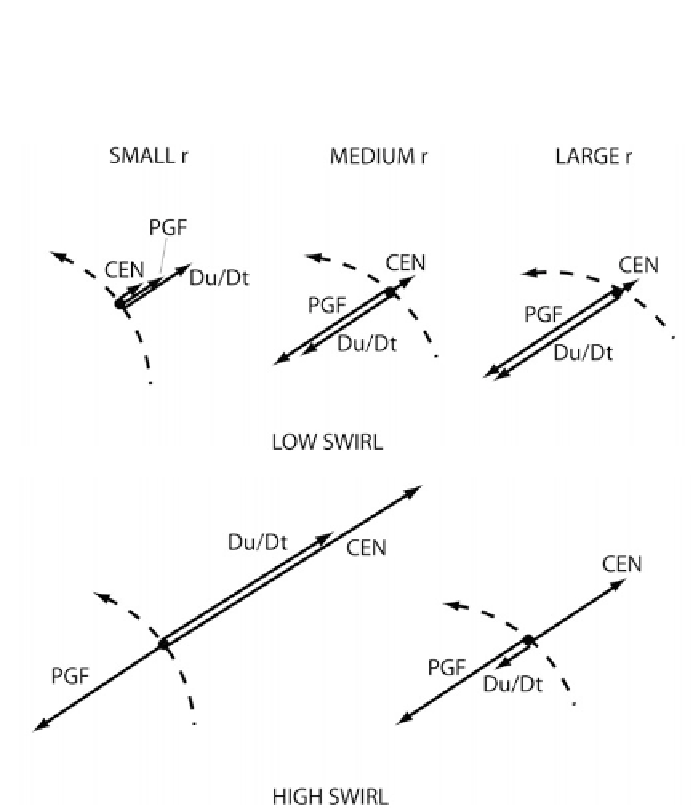Geoscience Reference
In-Depth Information
3
|
{z
}
CEN
2
Du=Dt ¼ u @u=@r
|
{z
}
ACCEL
¼ G
=r
0
@p=@r
|
{z
}
PGF
Figure 6.59. Idealized illustrations of force diagrams (vectors) for various swirl ratios and
radii, for steady-state, frictionless flow at a level surface (where w
¼
0), for a potential vortex
characterized by angular momentum
G
. The curved dashed streamlines indicate the motion of
the air around the center of a cyclonic vortex. The governing equation of motion in the radial
direction is given at the top. The net acceleration is indicated by ACCEL, centrifugal accel-
eration by CEN, and pressure gradient force by PGF. For low swirl (ratio), at large r, CEN is
very small, and the radial acceleration is determined by the radially inward-directed PGF. As r
decreases, CEN increases, but is still relatively small. At small r, the air parcel must decelerate
before reaching r
¼
0, so the PGF reverses (especially if the swirl is very low and CEN very
low); as the parcel decelerates it turns upward before reaching r
¼
0. For high swirl (ratio), at
large r CEN detracts from the inward-directed PGF, so the parcel accelerates radially inward
more slowly. At smaller r, CEN increases so much that it eventually overwhelms the inward-
directed PGF and the parcel decelerates, finally coming to a halt and turning upward at some
relatively large value of r (much larger than that for the low-swirl case). A downward-directed
PGF (not shown here) at r
¼
0 drives a central downdraft.

Search WWH ::

Custom Search